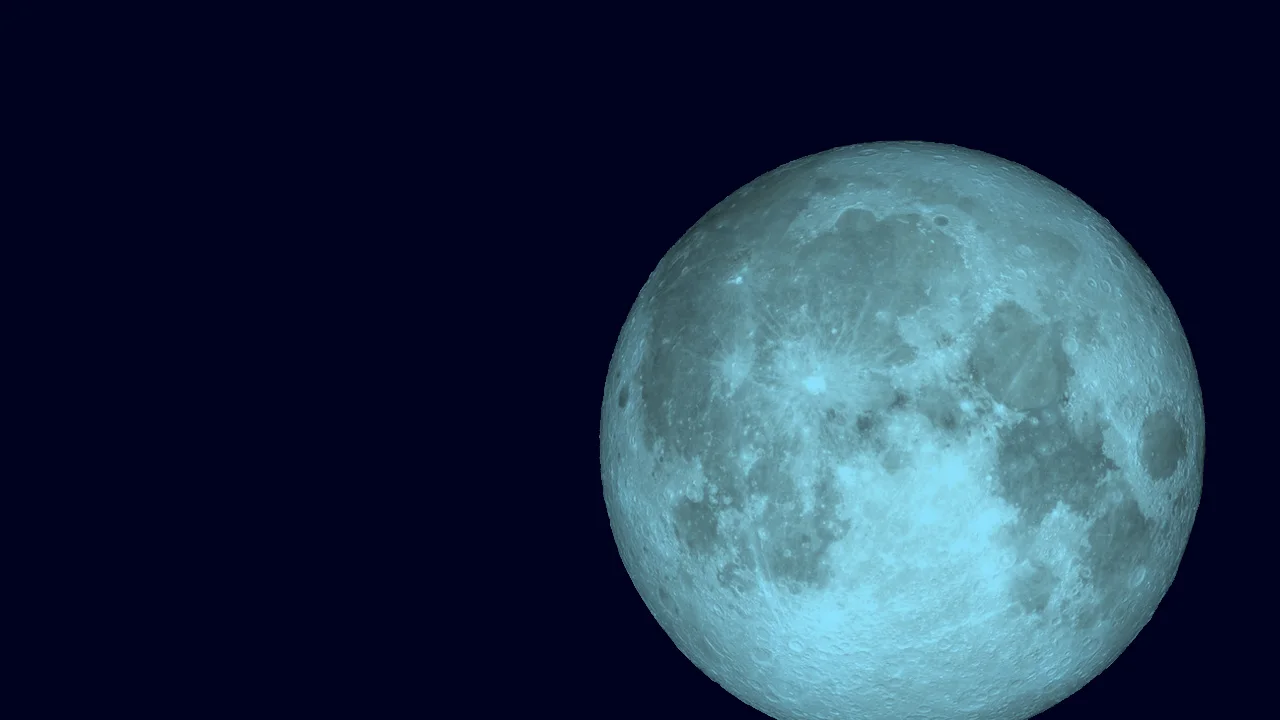
A rare Halloween Blue Moon will light up the scariest night of the year
This is the first Halloween Full Moon in nearly two decades!
Fall 2020 has three 'micromoons', but the October 31 Full Moon is extra special.
It sounds like the start of a scary story, but on Halloween night, a Full Moon will rise, and it will be remarkable in a few different ways.
To start, this is the first Halloween Full Moon we've seen in 19 years. Technically, though, in 2001, while the Moon was considered full on the night of October 31, it didn't actually reach its completely full phase until very early in the morning on November 1. To have a Halloween Full Moon timed the same as we are seeing this year, we have to go all the way back to 1944! The next Halloween Full Moon will be 19 years from now, in 2039.
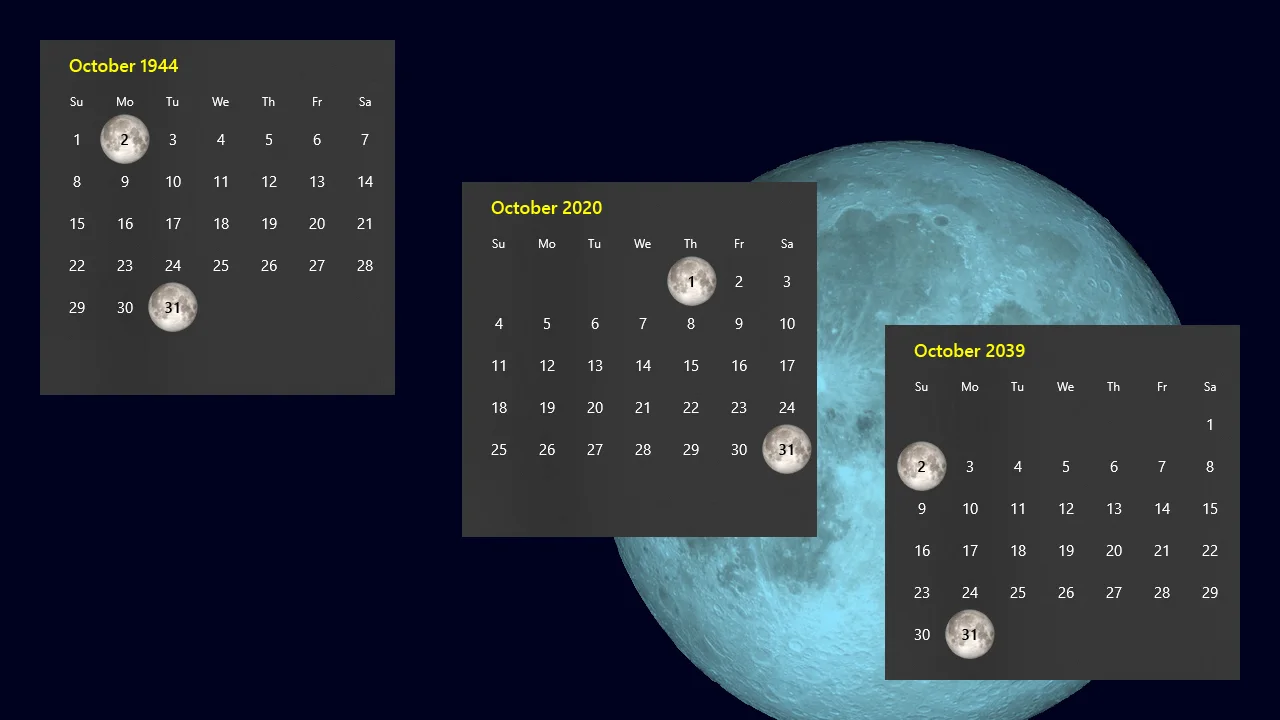
Halloween Full Moons are seen in 1944, 2020 and 2039. Background image credit: NASA's Scientific Visualization Studio.
Also, the October 31 Full Moon is a micromoon. We often hear about the supermoon, which is a Full Moon that is exceptionally close to Earth (closer than 361,500 km). A micromoon is a Full Moon that occurs when the Moon is exceptionally far from Earth (at least 405,000 km away).
In fact, this is the farthest Full Moon of the entire year, making it 2020's 'apogee' Full Moon!
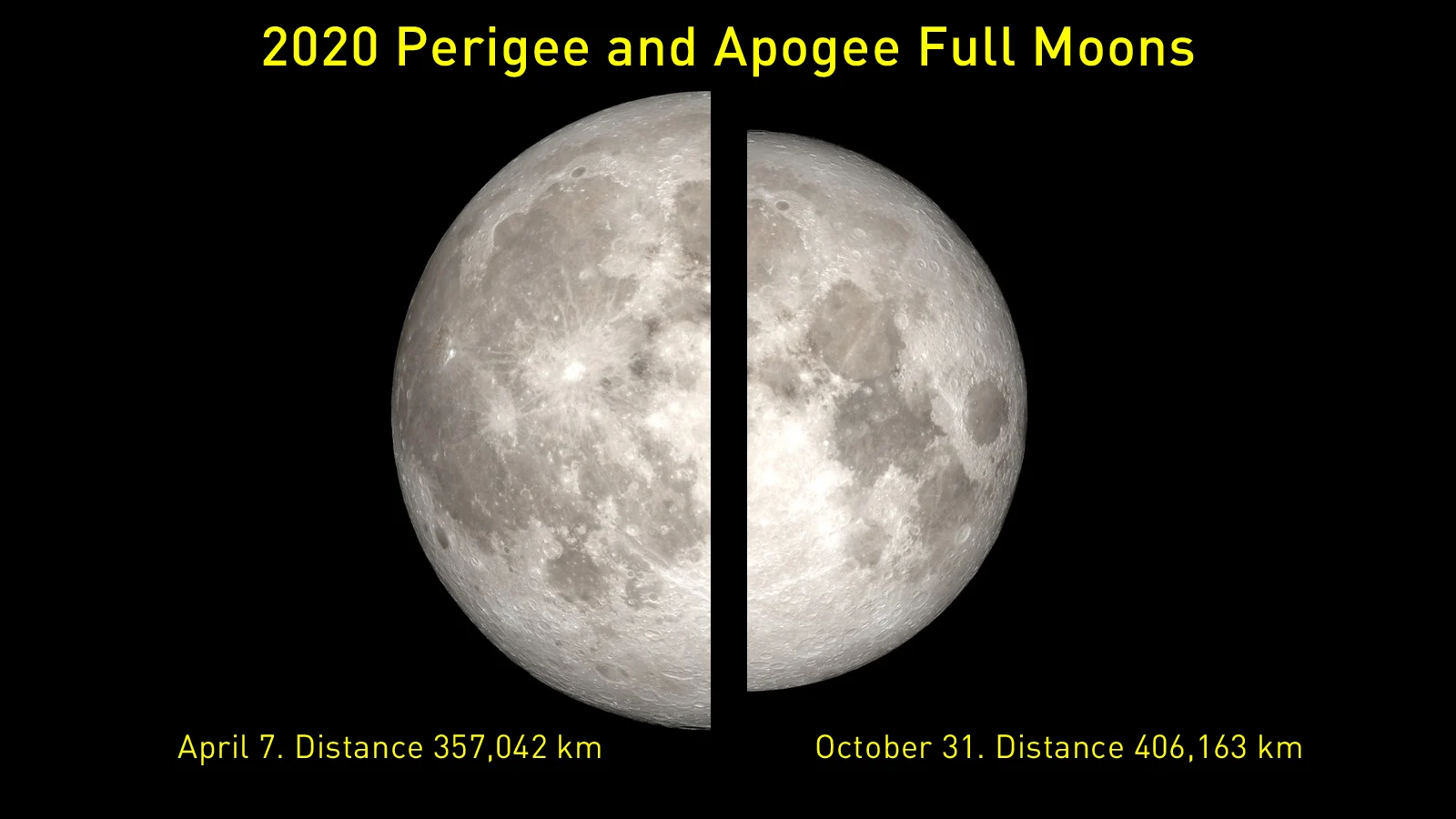
A comparison between the April 7 Perigee Full Moon and the October 31 Apogee Full Moon. Credit: NASA's Scientific Visualization Studio/Scott Sutherland
Visit our Complete Guide to Fall 2020 for an in depth look at the Fall Forecast, tips to plan for it and a sneak peek at the winter ahead
With the Harvest Moon having occurred on October 1, the October 31 Hunter's Moon is the second Full Moon occurring in the same calendar month. By one definition, that makes it a Blue Moon!
So, it's a Halloween Hunter's Blue Micro Moon!
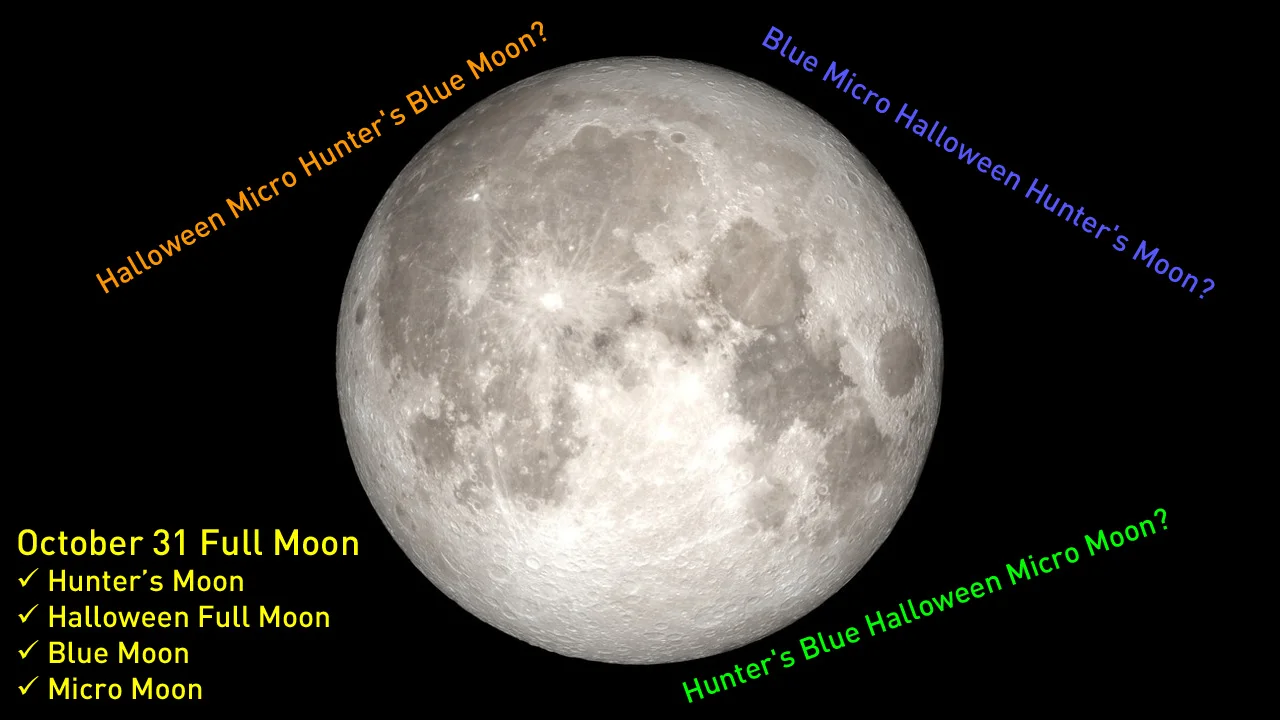
The October 31 Halloween Full Moon and its various possible names. Credit: NASA's Scientific Visualization Studio/Scott Sutherland
The last 'calendar' Blue Moon was during the Super Blue Blood Moon total lunar eclipse, on January 31, 2018. The last time we had a Halloween Blue Moon, though, was in 1974, although just barely! The Moon was actually full on the night of October 30-31, but it officially reached its full phase after midnight on the 31st. We again have to go all the way back to 1944 for an actual Halloween Blue Moon.
The 2039 Halloween Full Moon will also be the next Halloween Blue Moon.
Related: See every view of the moon for 2020 in less than 5 minutes
IS A BLUE MOON ACTUALLY BLUE?
The Moon doesn't actually appear blue on the night of a Blue Moon. It is just a saying, taken to mean "seldom" or "rare" since we don't often see the Moon look blue.
Most often, when we see the Moon change colour, it's either orange or red. This can be due to a lunar eclipse, when a Full Moon passes through Earth's umbra - the darkest part of the planet's shadow. The umbra is tinged red because when sunlight passes through the atmosphere, the air molecules and the various dust, particles, water droplets and so on, scatter the shorter wavelengths of the light first. So, only the reds emerge out into space on the other side.
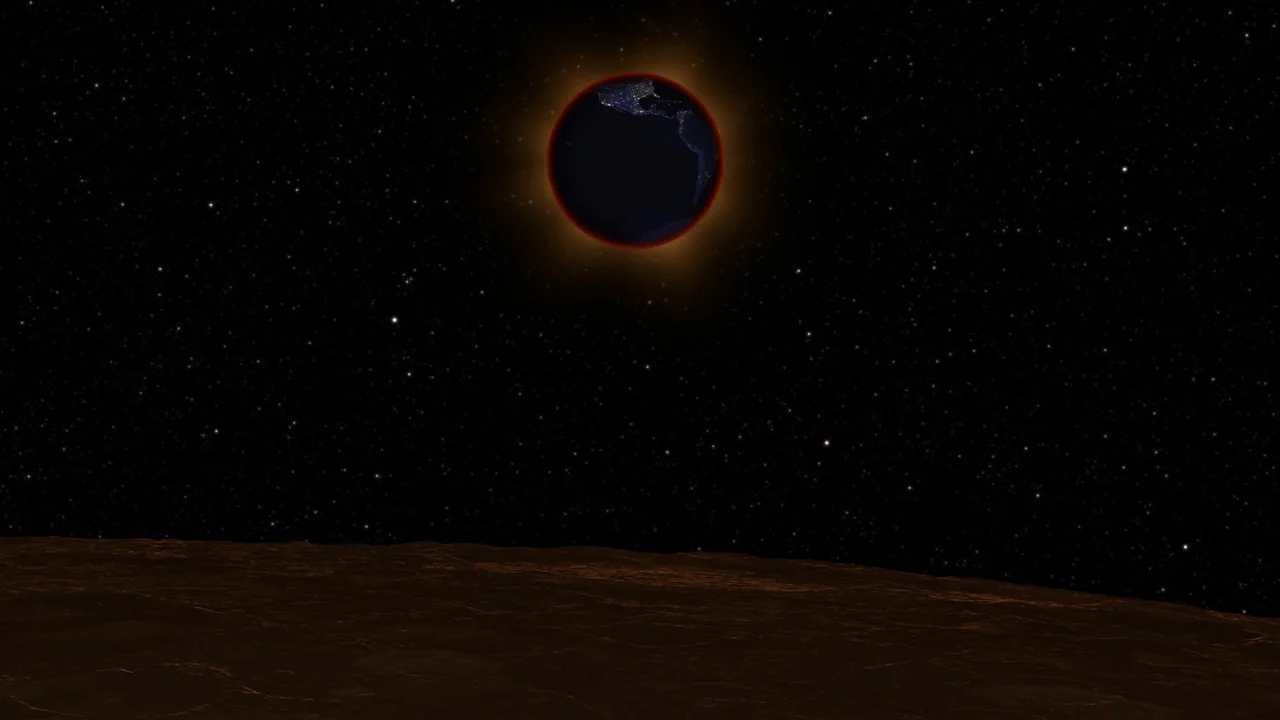
Watching a lunar eclipse from the surface of the Moon, the Earth would appear ringed in red, as sunlight filtered through the atmosphere. Credit: NASA's Scientific Visualization Studio
We can also see this kind of colour-change when there are smoke and ash particles in the air. In this case, the shorter wavelengths of the moonlight are quickly scattered, letting only the longer orange and red wavelengths pass unchanged.
Read more: Watch for these amazing Fall night sky sights
Every once in awhile, though, we can see the Moon actually look blue, and it doesn't necessarily have to be full for this to happen.
According to NASA, "The key to a blue Moon is having in the air lots of particles slightly wider than the wavelength of red light (0.7 micron) - and no other sizes present. This is rare, but volcanoes sometimes spit out such clouds, as do forest fires."
As it happens, if there are a lot of ultrafine ash particles in the air (~1 micron), and these are the only particles present, the red wavelengths of light will be scattered first. Thus, since only the shorter wavelengths pass through unimpeded, it gives the Moon a blue tinge. There were reports of the Moon appearing blue for years following the 1883 Krakatoa eruption. They were also seen after Mount St. Helens erupted in 1980, following the 1983 El Chichon eruption, and after the Mount Pinatubo eruption in 1991.











